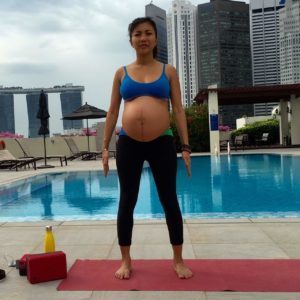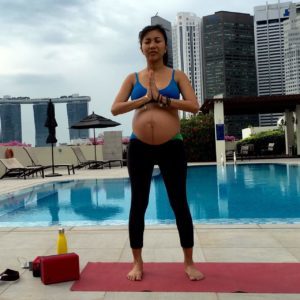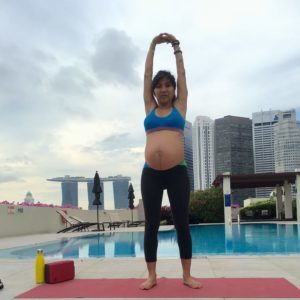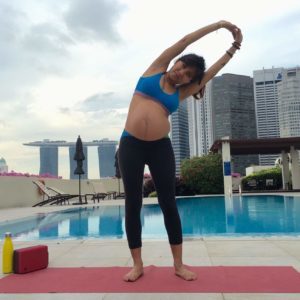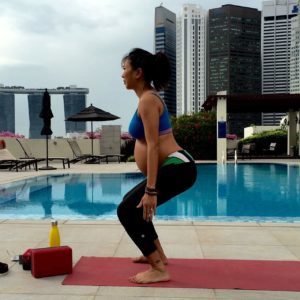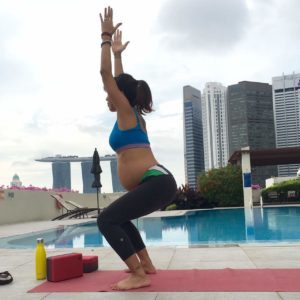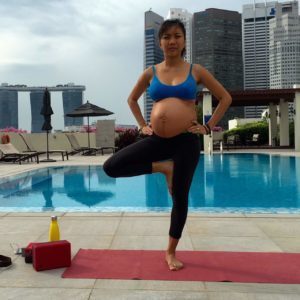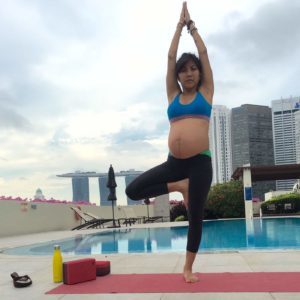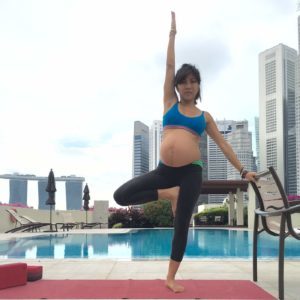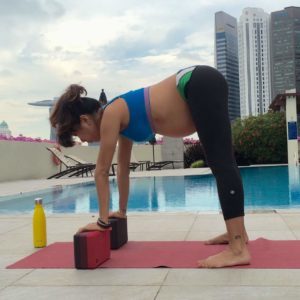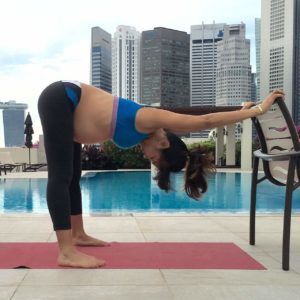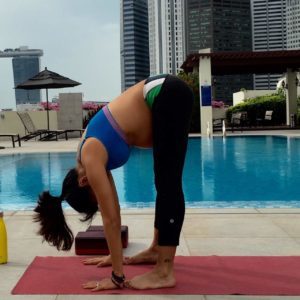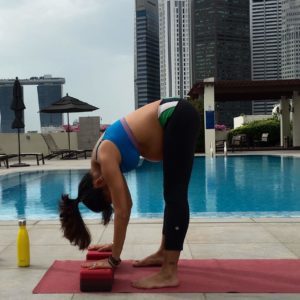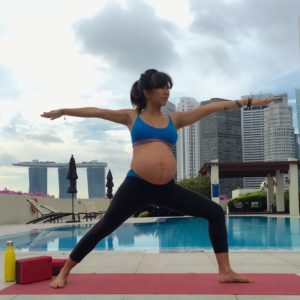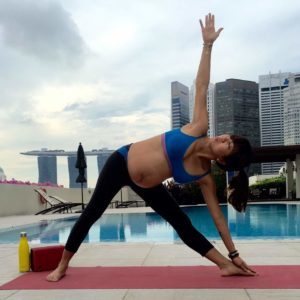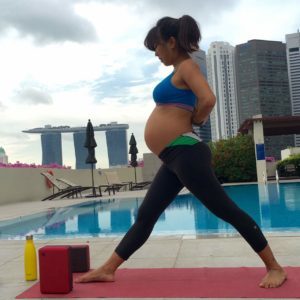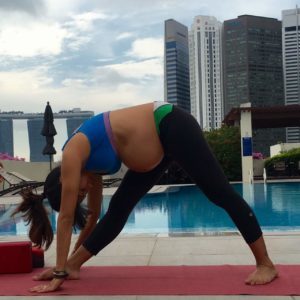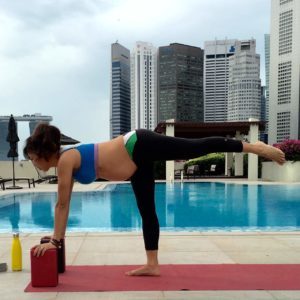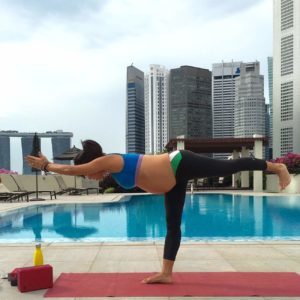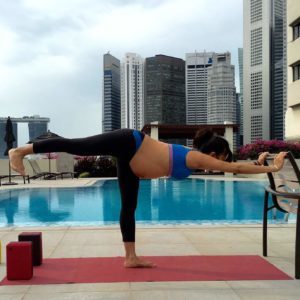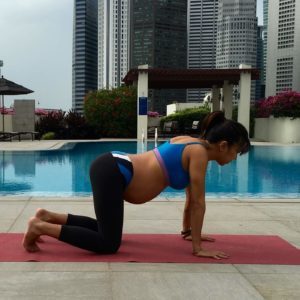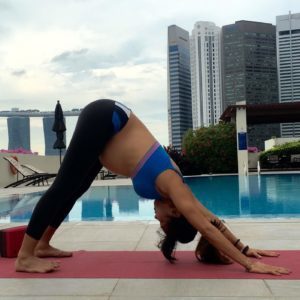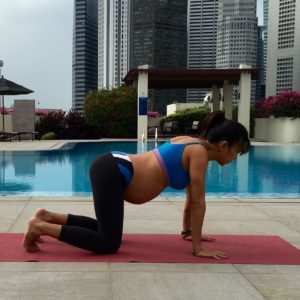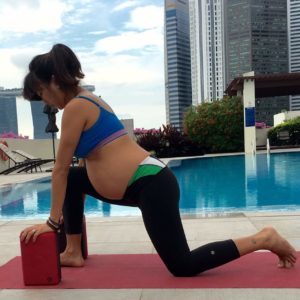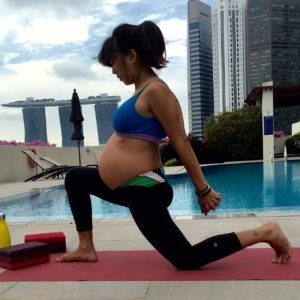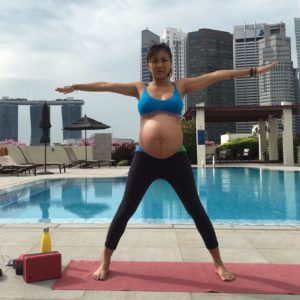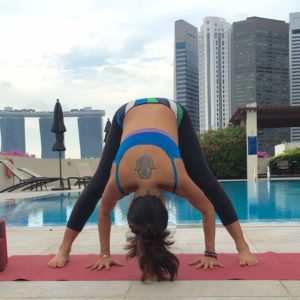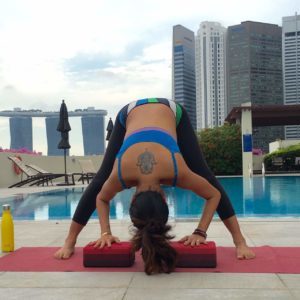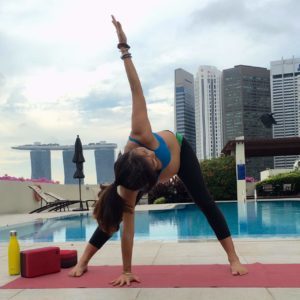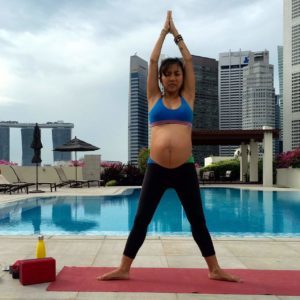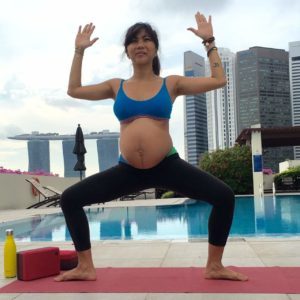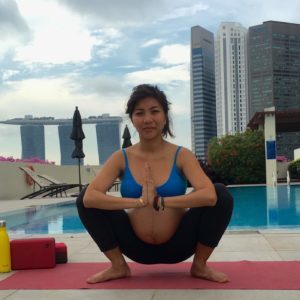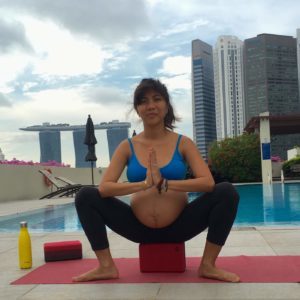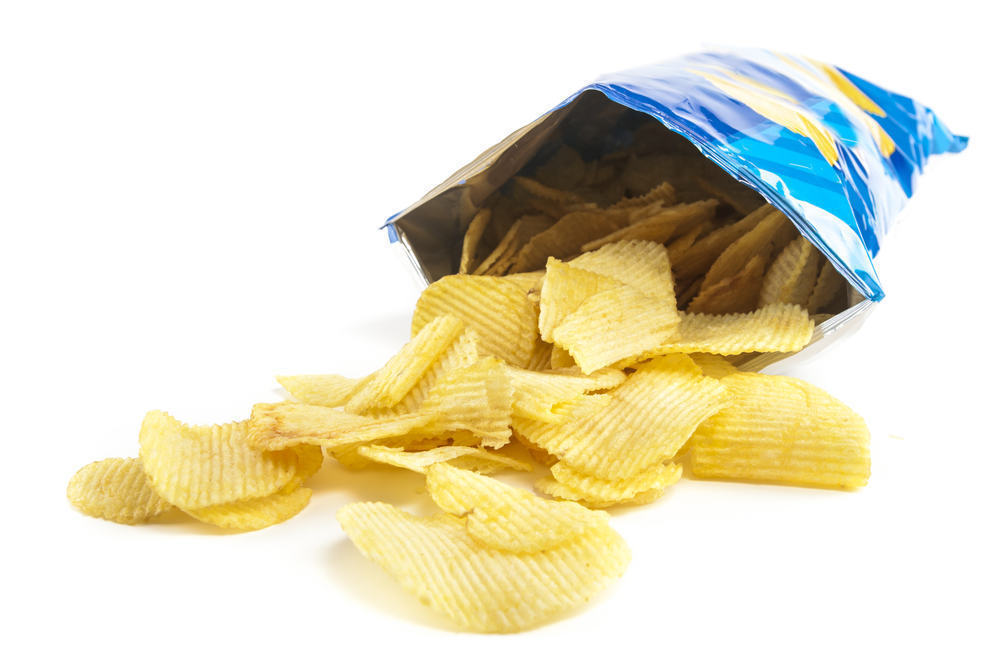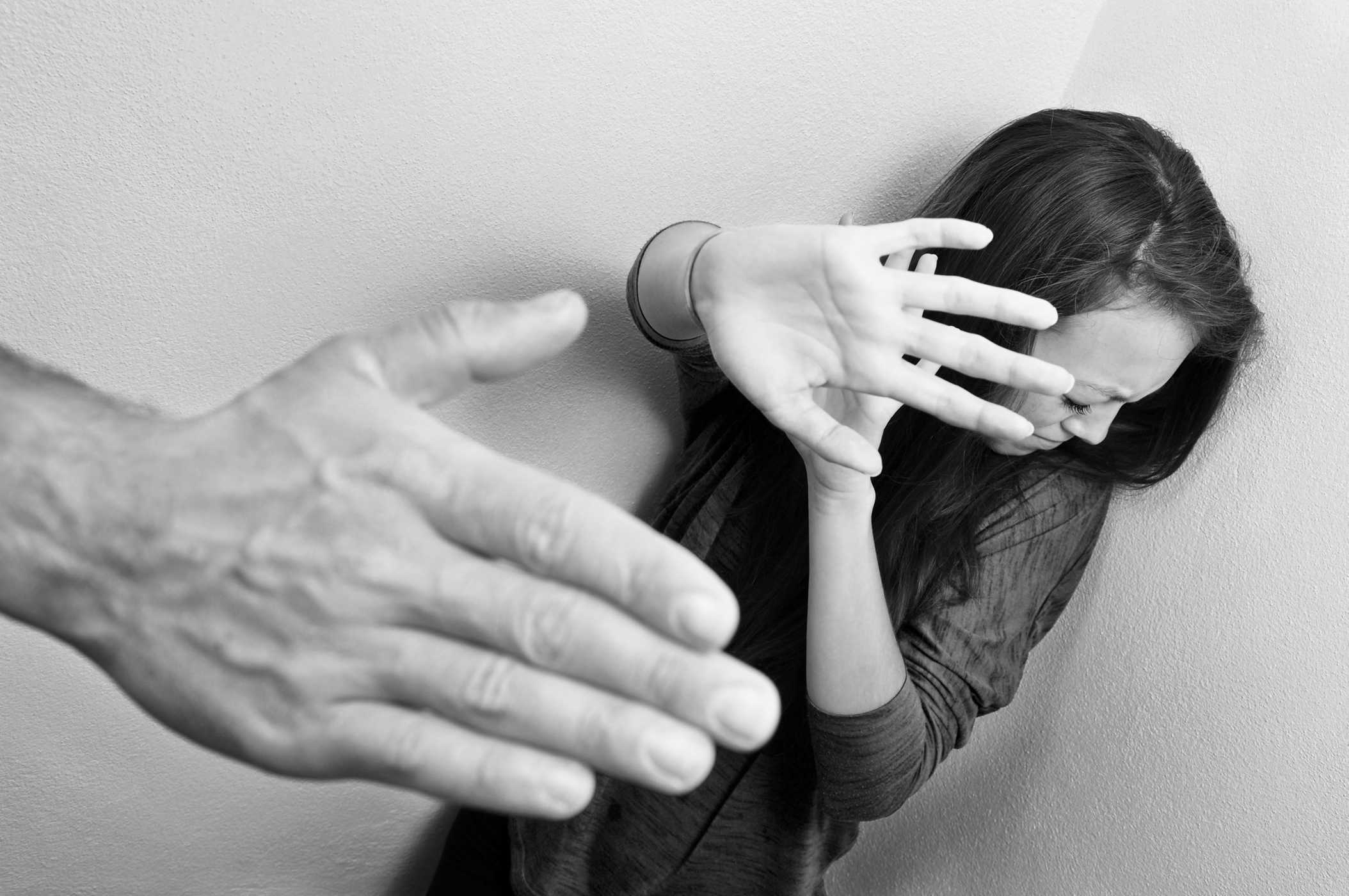Contents:
- Medical Video: Prenatal Yoga Routine: Maternity Circle (all trimesters)
- 1. Mountain pose (Tadasana)
- 2. Chair pose (Uttkatasana)
- 3. Tree pose (Vrksasana)
- 4. Half intense stretch pose (Ardha Uttanasana)
- 5. Intense stretch poses (Uttanasana)
- 6. Warrior II (Virabhadrasana II)
- 7. Extended triangle pose (Utthita Trikonasana)
- 8. Intense side stretch pose (Parsvottanasana)
- 9. Warrior III (Virabhadrasana III)
- 10. Downward dog (Adho Mukha Svanasana)
- 11. Low lunge (Anjeneyasana)
- 12. Extended intense leg stretch pose (Prasarita Padotanasana)
- 13. Goddess pose / half squat (For Konasana words)
- 14. Full squat (Malasana)
Medical Video: Prenatal Yoga Routine: Maternity Circle (all trimesters)
As I explained in the previous article, practicing yoga at home is no less exciting than practicing in a yoga studio. But keep in mind that when you practice prenatal yoga, often many postures need to be modified according to the condition of your pregnancy.
I will describe yoga postures that are safe for you to practice regularly during pregnancy, of course with some modifications and variations, plus how to use the help of yoga blocks, chairs, or walls if you feel lost in balance when practicing.
For this first series, I will describe specific guidelines for standing positions /standing poses.
1. Mountain pose (Tadasana)
Way:
- Stand on both feet, stretch your legs as wide as your waist, then make sure to position the feet parallel where the big toe is facing the inside of the body and facing each other. It's better if you give space between the legs, because with the condition of your stomach, this position is more comfortable.
- The arms are active next to the body with active palms and fingers fused.
- Soften the facial muscles and shoulder muscles, you can do while closing your eyes.
Variation:
- Bring your palms together in front of your chest while closing your eyes and breathing deeply. Do this before starting a yoga practice to harmonize your breathing, focus and balance.
- Unite / interlace the two palms, lift up and extend the arms next to the head until the palms are interwoven and the palms open above your head.
- Stretch (stretching) arms and body to the right and left side.
Perform each posture while breathing long from the nose as much as 5-8 breaths. For variation movements, repeat 3 times. You can use this pose to warm up the body. Make sure you don't hold your breath, because it's important to always breathe long for you and your baby.
2. Chair pose (Uttkatasana)
Way:
- Perform an upright position (Tadasana) then bend your knees, as if you are sitting on a chair. Make sure you don't strain the abdominal muscles but strengthen the pelvic floor muscles more.
- Then lift and extend your arms next to your body, palms active.
Do each posture while breathing long from the nose for 5 breaths, then repeat the movement 3 times. Make sure you don't hold your breath, because it's important to always breathe long for you and your baby.
3. Tree pose (Vrksasana)
Way:
- Stand in the Tadasana position, then bring your palms together to your waist, bend your right knee and bring your foot to the left thigh. If it's too difficult, bring your feet to the calves. Bring your view at one point to focus and balance the body.
- When you feel balanced, extend your arms and put your palms together above your head.
Variation:
Often when you're pregnant, it's hard to balance the body, but you can use help when practicing this posture, either with a wall or a chair.
Do each posture while breathing long from the nose as much as 5-8 breaths, then do the right and left side. Make sure you don't hold your breath, because it's important to always breathe long for you and your baby.
4. Half intense stretch pose (Ardha Uttanasana)
Way:
- Stand in the Tadasana position, then place the yoga block in a vertical position in front of you. Place your hands on the two blocks and align the position of your pelvis with your shoulders, and your pelvis is parallel to your ankles.
- You can also do this position with the help of a chair or wall. If you use the help of a chair or wall in front of you, then your palms are in front of your head and arms parallel to the position of your ears.
Perform each posture while breathing long from the nose as much as 5-8 breaths, then repeat 3 times. Make sure you don't hold your breath, because it's important to always breathe long for you and your baby.
5. Intense stretch poses (Uttanasana)
Way:
- Stand in the Tadasana position, then bring your palms together to your waist, bend your upper body and bring your palms to the floor.
- If your hands do not touch the floor, place the yoga block in front of your feet and place your palms on the block.
Perform each posture while breathing long from the nose as much as 5-8 breaths, then repeat 3 times. If you feel dizzy, stop doing this position, and return to the Tadasana position. Dizziness usually occurs if you don't breathe properly.
6. Warrior II (Virabhadrasana II)
Way:
- Stand in the Tadasana position, then bring your right foot back, your toes facing the right side. Then, bend the front leg with the toes facing forward.
- Then open your arms to the side, parallel to your shoulder. Make sure the forearm is active and parallel to the front arm. Your eyes are fixed on your front finger.
- Bring both of your palms to the waist, then step forward back to the Tadasana position. Do it to the left side of the leg.
Perform each posture while breathing long from the nose as much as 5-8 breaths. Make sure you don't hold your breath, because it's important to always breathe long for you and your baby.
7. Extended triangle pose (Utthita Trikonasana)
Way:
- Stand in the Warrior II position, then straighten your front legs, then bring your palm forward to reach your front big toe, or your front ankle. If this is too heavy, you can also put a block next to your front foot and place your palm on the block as a support.
- Then open your arms up, parallel to your arms that touch your thumb / block, open your chest and look at your fingers above your head. Make sure your shoulder, neck and facial muscles are relaxed.
- Take your body to a standing position with your arms at your sides, then place your hands on your waist and return to the Tadasana position. Do the same movement for the left side.
Perform each posture while breathing long from the nose as much as 5-8 breaths. Make sure you don't hold your breath, because it's important to always breathe long for you and your baby.
8. Intense side stretch pose (Parsvottanasana)
Way:
- From Tadasana, bring your right foot back. With the body facing forward, straighten the legs, and the back of the foot facing 45 degrees to the side. Then, put your palms behind your back, open your chest, and activate your shoulders.
- Separate your palms from your back and bring your front body close to your quads, but still give space to your stomach. Place the palm of the hand against the floor next to the forefoot, or if it is difficult to touch the floor, place the block next to your foot and place your palm on the block.
- Lift your body to a standing position and then stand in the Tadasana position. Do the same position for the left side.
Perform each posture while breathing long from the nose as much as 5-8 breaths. Make sure you don't hold your breath, because it's important to always breathe long for you and your baby.
9. Warrior III (Virabhadrasana III)
Way:
- From Tadasana, place a block in front of your feet, then do half intense stretch pose (pose number 4). Place your hand on the block, the hip parallel to the shoulder, then lift one leg. You can do this position until here, or put your palms together in front of your chest, the view is aimed at one point for focus and balance.
- If you feel stable enough, you can extend your arms and do the Warrior III pose perfectly. Be careful with your balance
- If it is difficult, you can also do the movement with the help of a chair or wall in front of you. Place your hands on the chair / wall, then lift one leg lengthwise to the back. Always active on the soles of your feet, then repeat for the left side of the foot.
Perform each posture while breathing long from the nose as much as 5-8 breaths, then repeat 3 times. If you feel dizzy, stop doing this position, and return to the Tadasana position. Dizziness usually occurs if you don't breathe properly.
10. Downward dog (Adho Mukha Svanasana)
Way:
- Take your body to the Table Top position, place your palms and knees on a yoga mat, press your fingers, then press your toes. Forward-looking view.
- Lift your knees, then straighten your legs later and bring your heels to the mat. Straighten your arms, push your shoulders back. This is the perfect position of Downward dog.
Modification:
If you feel pain in your hamstrings, when you straighten your legs and hold your heels close to the mat, you can modify your movements by bending your knees, but keep pushing your shoulders back.
Perform each posture while breathing long from the nose as much as 5-8 breaths, then repeat 3 times. You can even do this position between other poses. If you feel dizzy, stop doing this position, and return to the Table Top position. Dizziness usually occurs if you don't breathe properly.
11. Low lunge (Anjeneyasana)
Way:
- Take your body to the Table Top position, place your palms and knees on a yoga mat, press your fingers and then press your toes. Forward-looking view.
- Place the block in front of your feet, then place your palm on the block, bring your right foot forward.
- If you feel stable and your scrub is comfortable, you can release your hand from the block and bring your palm behind your back. Bring your palms together into one fist, open your chest.
- Return to pose number 10 way 2, then repeat the movement for the left side.
Perform each posture while breathing long from the nose as much as 5-8 breaths. If you are uncomfortable with your knees, use a thin blanket or towel as a base for your knees. Make sure you don't hold your breath, because it's important to always breathe long for you and your baby.
12. Extended intense leg stretch pose (Prasarita Padotanasana)
Way:
- Take your body to the Tadasana position, bring your right foot back and open your body to the side. Spread your arms aside, activate your fingers.
- Bend your body forward and place your palms on the floor.
- If it is difficult to touch the floor, use a block and place your palm on the block.
Variation:
- Then open your right arm to the upper side. While bringing your eyes to your upper hand, soften the neck muscles of the shoulders and face. Bring back the arms down until the palm touches the floor or block.
- Repeat the same movement for the left side.
- Then return to pose number 11 way 1, and Tadasana.
Do each posture while breathing long from the nose as much as 5-8 breaths, then repeat the variations 3 times. If you feel dizzy, stop doing this position, and return to the Table Top position. Dizziness usually occurs if you don't breathe properly.
13. Goddess pose / half squat (For Konasana words)
Way:
- Take your body to the Tadasana position, unite your palms above your head. Spread your legs with your toes facing to the side. Point forward.
- Bend your elbows and knees at the same time, making sure you breathe together with your body movements.
- Return to Tadasana position.
Perform each posture while breathing long from the nose as much as 5-8 breaths, then repeat 5 times. You can breathe while standing upright, and exhale when bending your elbows and knees.
14. Full squat (Malasana)
Way:
- Take your body to the Tadasana position, then spread your legs with your fingers facing to the side. Bend your knees until you are in a squat position, try to push your heels to the floor.
- Bring your palms together in front of your chest, bring your elbows in front of your knees, straighten your back, open your shoulders and chest.
- For those of you who find it hard to push your heels to the floor when you squat, you can put a block for you to sit on. Thus, your position will be better and you can open your legs more broadly. In the final trimester of gestation before birth, use blocks as support also makes you feel lighter when doing this posture.
- You can get out of this position by sitting on the mat and then returning to the Tadasana position.
Perform each posture while breathing long from the nose as much as 5-8 breaths. Make sure you don't hold your breath, because it's important to always breathe long for you and your baby.
You can train the positions above every day at home. Make sure you read the instructions clearly and always pay attention to the condition of your body, because there are times when our body is more tired, maybe because of lack of sleep or because of body hormones. Make sure you always breathe long at every movement to increase the body's energy, and make the body's circulation better.
Good practice!
** Dian Sonnerstedt is a professional yoga instructor who actively teaches various types of yoga from Hatha, Vinyasa, Yin, and Prenatal Yoga both for private classes, offices, and at Ubud Yoga Center, Bali. Dian is currently registered with YogaAlliance.org and can be contacted directly through her Instagram account, @diansonnerstedt.
READ ALSO:
- 7 Benefits of Prenatal Yoga for Pregnant Women
- 4 Things You Need to Know About Prenatal Yoga
- 4 Things You Need to Know About Prenatal Yoga


